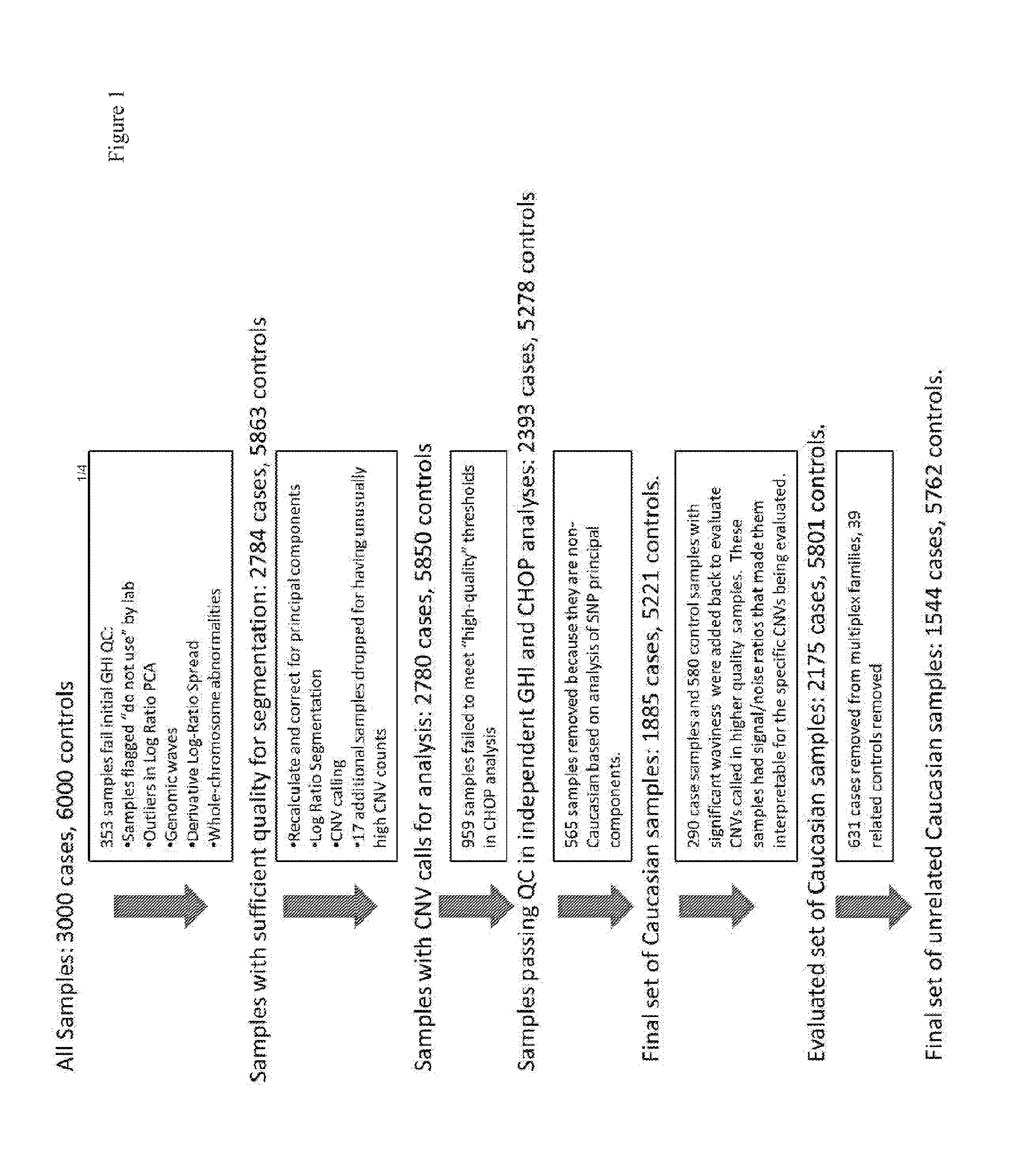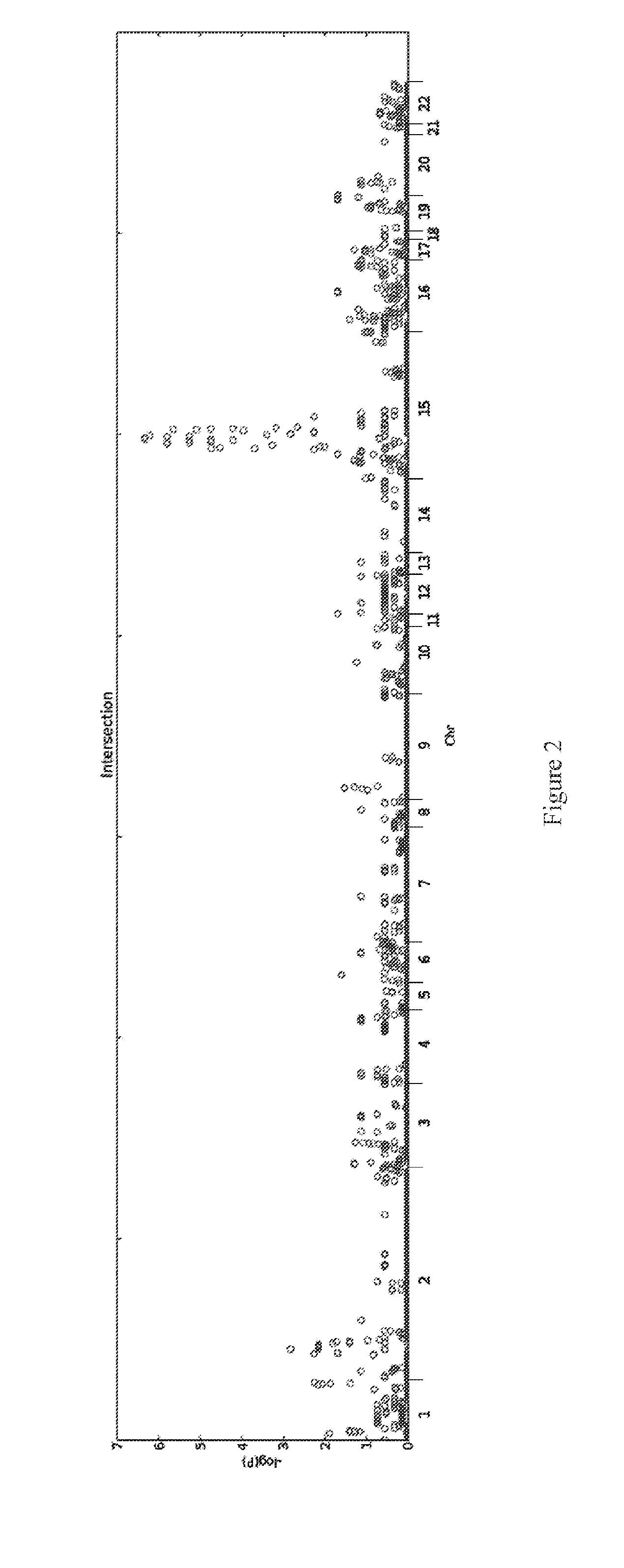Genetic markers associated with asd and other childhood developmental delay disorders
a technology of genetic markers and asd, which is applied in the field of genetic markers associated with asd and other childhood developmental delay disorders, can solve the problems that the findings of these studies have not been fully utilized for clinical evaluation of children with asd, and it is difficult to understand the relevant biology of some variants
- Summary
- Abstract
- Description
- Claims
- Application Information
AI Technical Summary
Benefits of technology
Problems solved by technology
Method used
Image
Examples
example 1
[0097]Genetics are known to play a major role in individuals with autism. However, the genetic underpinnings of autism are highly complex. The study described in this example used high-risk autism families to identify genetic variants that could predispose to autism in these families. This study also further evaluated these variants in a very large group of unrelated autism samples and controls to determine if these variants were relevant to children with autism in the broader population. This study identified 18 genetic variants that have not previously been observed in children with autism that are important not only in families but also in unrelated children with autism. By using a very large group of samples and controls this study also provides better frequency and significance estimates for many genetic variants previously associated with autism. This study sets the stage for using these genetic variants in the clinical analysis of children with autism.
[0098]Structural variati...
example 2
Design of a Custom Clinical Array
[0191]A custom clinical array was designed based on the results of the study described in Example 1. The study array used in Example 1 included about 10,000 probes for the regions being studied. Therefore, a custom array was specifically designed for clinical use to enhance coverage for the CNVs identified as associated with ASD. Custom probes for detection of other childhood developmental delay disorders were also included on the array as outlined in Table 11 below.
[0192]Table 11 below summarizes the custom probes designed for and included on the clinical array. The clinical array is based on the Affymetrix CytoScan-HD array and includes the 83,443 custom probes provided in the sequence listing and also described in Table 14. The 83,443 probes were added to the Affymetrix array to ensure sufficient coverage of all of the regions described in Tables 8 and 9, as well as to detect CNVs for the other disorders listed in Table 11.
TABLE 11Summary of Custo...
PUM
| Property | Measurement | Unit |
|---|---|---|
| concentration | aaaaa | aaaaa |
| disorder | aaaaa | aaaaa |
| density | aaaaa | aaaaa |
Abstract
Description
Claims
Application Information
 Login to View More
Login to View More - R&D
- Intellectual Property
- Life Sciences
- Materials
- Tech Scout
- Unparalleled Data Quality
- Higher Quality Content
- 60% Fewer Hallucinations
Browse by: Latest US Patents, China's latest patents, Technical Efficacy Thesaurus, Application Domain, Technology Topic, Popular Technical Reports.
© 2025 PatSnap. All rights reserved.Legal|Privacy policy|Modern Slavery Act Transparency Statement|Sitemap|About US| Contact US: help@patsnap.com



